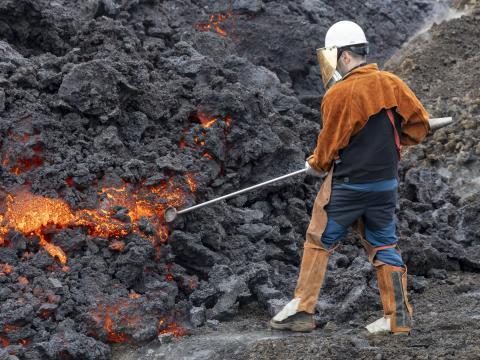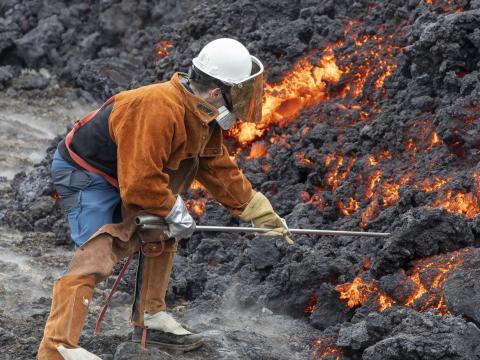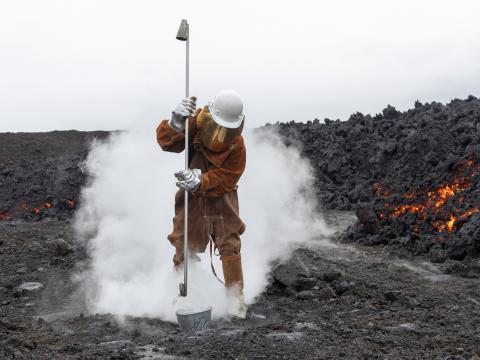
Melt compositions during the 2023-2024 Sundhnúkur events
The composition of silicate glass in quenched lava and tephra has been analyzed by the electron microprobe (EPMA) of the Institute of Earth Sciences, University of Iceland throughout the activity along the Sundhnúkur crater row. The MgO content of the glass varies between 5.6 and 6.7 wt%, whereas TiO2 changes from 1.8 to 2.5 wt% (Figure 1). The MgO contents are slightly higher in glasses analyzed in quickly cooled tephra, while TiO2 contents are somewhat lower. This is related to microlite crystallization in the lava after eruption and before quenching in a bucket of water (Figure 2).




